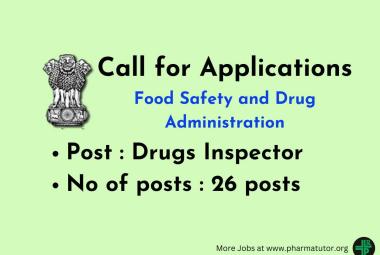Pharmacovigilance is the process of monitoring and assessing the safety of medications after they have been approved and are on the market. This includes identifying and assessing potential side effects, monitoring the use of medications in real-world settings, and taking appropriate actions to minimize risks and improve patient safety.
Key components of pharmacovigilance include:
Adverse event reporting: This involves collecting and analyzing reports of adverse events (such as side effects) associated with the use of a medication.
Risk management: This involves identifying and assessing potential risks associated with a medication and taking appropriate actions to minimize those risks, such as updating labeling or warning patients and healthcare providers about potential risks.
Drug utilization review: This involves monitoring the use of medications in real-world settings to identify potential safety issues, such as inappropriate prescribing or overuse.
Benefit-risk assessment: This involves evaluating the overall benefits and risks of a medication to ensure that its benefits continue to outweigh its risks.
Pharmacovigilance is important to ensure the safety of medications, and it is a continuous process that requires ongoing monitoring, assessment, and action to minimize risks and improve patient safety.
Role of Pharmacists in Pharmacovigilance
Pharmacists play an important role in pharmacovigilance, which is the process of monitoring and evaluating the safety of medications. They are responsible for identifying and reporting adverse drug reactions (ADRs) and other safety concerns related to medications. Pharmacists also help to educate patients and healthcare providers about the safe use of medications, including potential side effects and interactions. Additionally, pharmacists may also be involved in reviewing and analyzing data on ADRs and helping to develop strategies to prevent them in the future. Overall, pharmacists are key members of the healthcare team and play a vital role in ensuring the safe and effective use of medications.
Challenges for Pharmacovigilance in India
Pharmacovigilance in India faces several challenges, including a lack of awareness and understanding of the concept among healthcare professionals and the general public, inadequate reporting of adverse drug reactions, and limited resources for monitoring and analyzing reported reactions. Additionally, there is a lack of a centralized reporting system, which makes it difficult to track and investigate adverse reactions. There is also a lack of standardization of the data collected, which makes it difficult to compare and analyze reactions across different regions and populations. Furthermore, the lack of resources and personnel dedicated to pharmacovigilance in India also hinder the ability to effectively monitor and investigate adverse reactions to drugs.
There are several challenges for pharmacovigilance in India, including:
Limited resources and infrastructure: The Indian pharmacovigilance system is underfunded and understaffed, making it difficult to effectively monitor and report adverse drug reactions.
Lack of awareness and education: Many healthcare professionals and patients in India are not aware of the importance of pharmacovigilance and may not report adverse drug reactions.
Limited regulations and enforcement: The regulatory framework for pharmacovigilance in India is not as robust as in developed countries, and enforcement is often weak.
Limited access to information: The Indian pharmacovigilance system relies heavily on spontaneous reporting, and there is limited access to information from other sources such as clinical trials and post-marketing surveillance.
Quality of data: The quality of data submitted to the Indian pharmacovigilance system is often poor and may not be sufficient for meaningful analysis.
Limited capacity for analysis and risk management: The Indian pharmacovigilance system has limited capacity for analyzing and managing risks associated with adverse drug reactions.
What is future of pharmacovigilance in India
The future of pharmacovigilance in India is likely to see continued growth and development. The Indian government has made significant efforts in recent years to strengthen the country's pharmacovigilance system and regulations. This includes the implementation of new guidelines for reporting and monitoring adverse drug reactions, as well as the establishment of a national pharmacovigilance center. Additionally, the Indian pharmaceutical industry is expected to continue to grow, which will likely lead to increased pharmacovigilance activities.
The future of pharmacovigilance in India is expected to continue growing as the country's healthcare system and pharmaceutical industry expand. The Indian government has implemented several regulations and guidelines to strengthen pharmacovigilance in the country, such as the establishment of the Central Drugs Standard Control Organization (CDSCO) and the National Pharmacovigilance Programme (NPVP). Additionally, the government is encouraging the use of technology, such as electronic reporting systems, to improve the efficiency and effectiveness of pharmacovigilance. As the Indian population continues to grow and the demand for healthcare and pharmaceuticals increases, it is likely that the importance of pharmacovigilance will also continue to grow in India.
The Indian government has also taken steps to improve the training and education of healthcare professionals in pharmacovigilance. This includes the development of guidelines for the reporting and management of adverse drug reactions, as well as the establishment of training programs for healthcare professionals.
Furthermore, the Indian government has also made efforts to increase public awareness about pharmacovigilance and the importance of reporting adverse drug reactions. This includes campaigns to educate patients and healthcare professionals about the importance of reporting adverse reactions, as well as the launch of a national helpline for the reporting of adverse reactions.
In 2017, the Indian government made it mandatory for all pharmaceutical companies to report ADRs to the NPVP. In addition, the government established the Indian Pharmacopoeia Commission (IPC) to establish standards for the quality of drugs in the country.
The NPVP also collaborates with the World Health Organization (WHO) to improve the pharmacovigilance system in India. In 2020, the NPVP has been designated as a WHO Collaborating Centre for Pharmacovigilance and Pharmacoepidemiology.
In recent years, the Indian government has also made efforts to improve the regulation of clinical trials in the country. In 2019, the Drugs and Cosmetics Act was amended to establish a new regulatory framework for clinical trials, which includes stricter rules for the conduct and reporting of trials.
Overall, India has made significant progress in the field of pharmacovigilance in recent years, with the establishment of a national pharmacovigilance program, the implementation of regulations for the reporting and monitoring of adverse drug reactions, and efforts to improve the training and education of healthcare professionals in pharmacovigilance.









